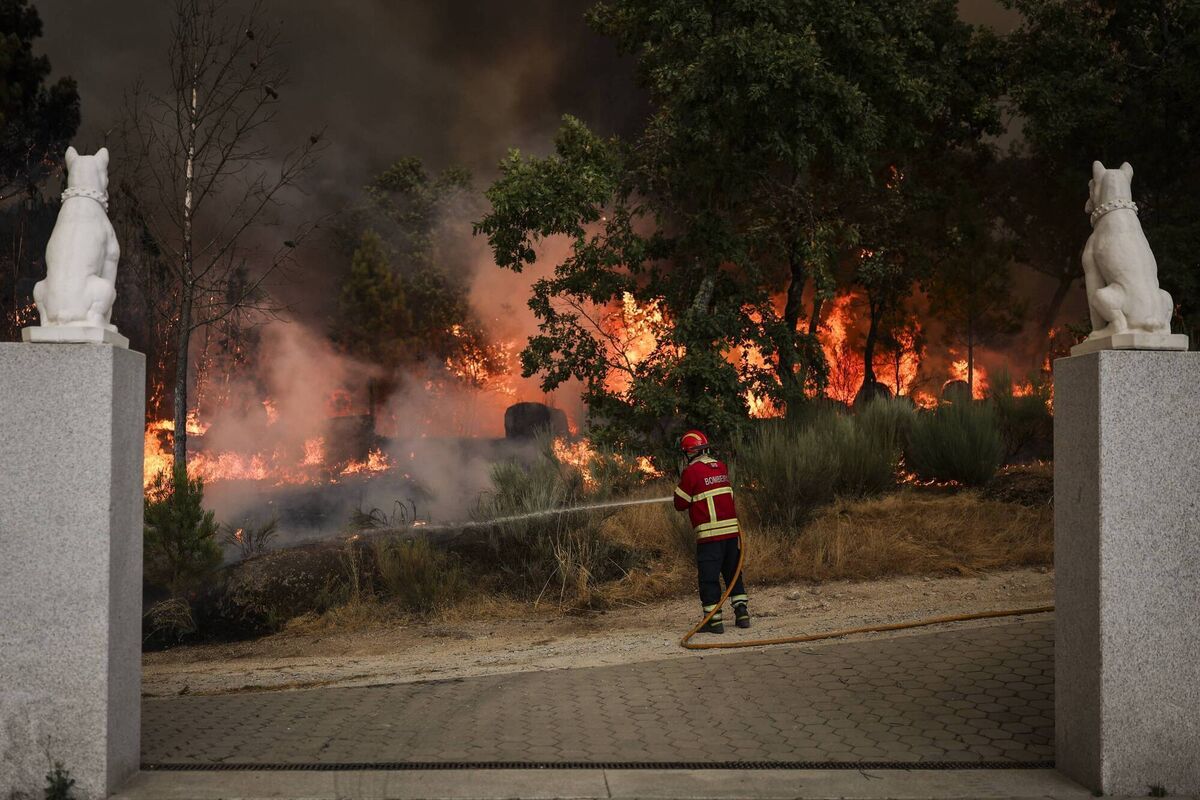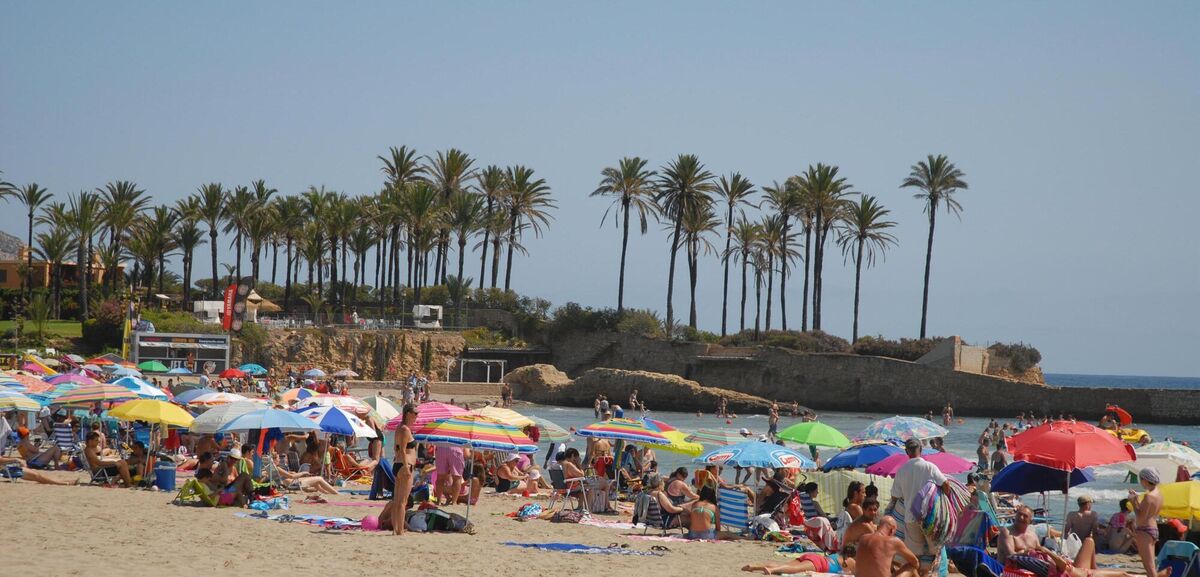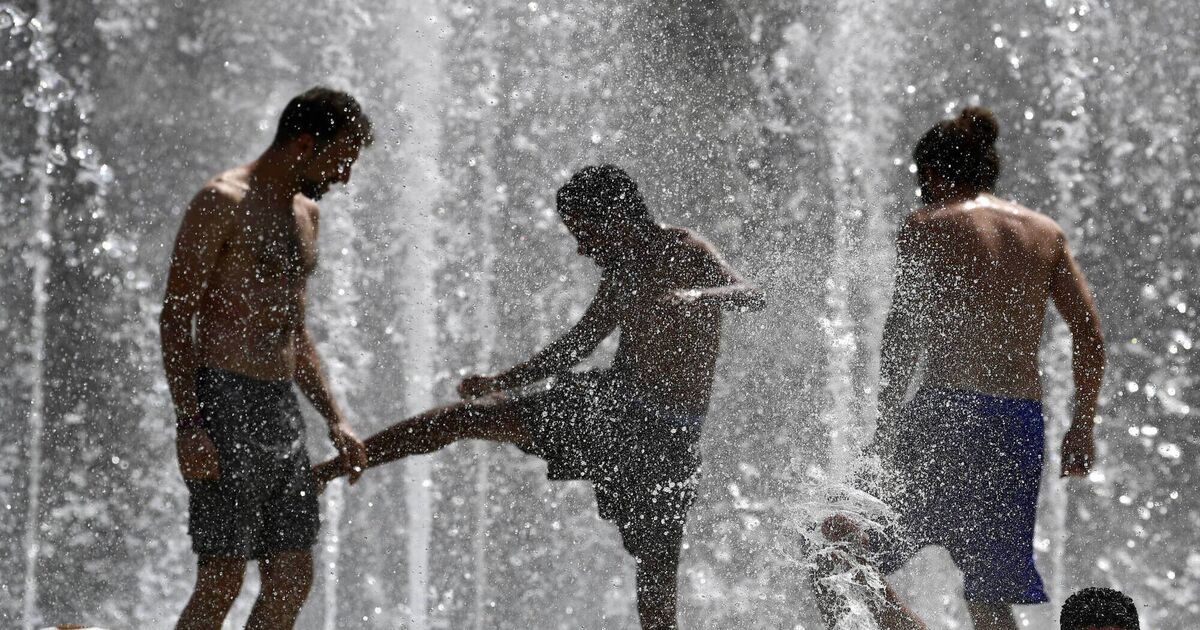As Ireland’s most recent heatwave is replaced by an autumnal chill in the air, spare a thought for our European cousins, for whom far-more-outlandish temperatures have become a predictable annual occurrence.
Last year, Greece, in particular the island of Rhodes, was decimated by surging temperatures and rampant wildfires.
This summer Spain (among others) has become the latest European hot-weather country hit by the scourge of wildfires, with close to a million acres of forestry burnt to date across the summer.
The sunshine months in the climate change-era now represent more than the opportunity for a much-needed holiday and the sensation of sun on skin.
Soaring temperatures currently equate to a sensitive public health issue for native residents in many of the countries traditionally seen as sun-holiday destinations for those of us living in Ireland and Britain.
 Temperatures reached as high as 46C in some of Spain’s southern regions. Picture: Cristina Quicler /AFP via Getty Images
Temperatures reached as high as 46C in some of Spain’s southern regions. Picture: Cristina Quicler /AFP via Getty Images
In Spain, for example, the recent stultifying temperatures — reaching as high as 46C in some of the country’s southern regions — are very much a political hot potato.
With the country’s power grid surging — in response to the mass demand for air conditioning — the extreme temperatures proved a deadly hazard to the most vulnerable in Spanish society: the elderly, the sick, the homeless.
Spain has a similar housing crisis to Ireland, with demands domestically for the tourist season to be extended beyond the three core summer months in order to ease the burden on an overtaxed accommodation market.
Given the Irish population’s traditional enthusiasm for sunning themselves abroad, temperatures floating around the 40C mark have not gone unnoticed by Irish tourists.
Darragh Joyce from Limerick described the conditions on his recent honeymoon in Seville — the southern city at the epicentre of the Spanish heatwave — to the Irish Examiner. Forty-one degree temperatures forced him and his partner to duck in and out of establishments to avoid the heat — partaking in the mist sprinklers installed in every cafe and restaurant in an effort to cool down.
“We just got away with it and maybe got home in good time. The plane home, they send you out to the runway and you’re left standing there for 15 minutes, I found that really tough, under the heat, just totally out in the open,” he said.
This year is just the latest year of many in which the Mediterranean coasts have endured torrid summer heat. Despite a palpable ramping-up in heady temperatures during the Irish summer, the true extremes of what is being seen down south are yet to really affect Ireland. In a decade, that may no longer be the case.
 The threat of wildfires has failed to put people off travelling. Picture: Patricia De Melo Moreira / AFP via Getty Images
The threat of wildfires has failed to put people off travelling. Picture: Patricia De Melo Moreira / AFP via Getty Images
But keeping it local, are Irish holidaymakers’ behaviours changing in light of these weather trends? And, if not, are they likely to do so?
The answer is more complicated than you may think. Yes, behaviours are changing, but not that quickly, and not as yet in a way to make corporate concerns profiting on the summer rush change their own strategies.
“There is no real change showing up in the market, there is no movement,” says travel commentator Eoghan Corry.
He is not wrong. Irish travel to Spain and Portugal is up in 2025 year on year, and not insignificantly.
In May and June, the numbers heading to Spain from Irish shores were up 13.1% and 8.1% respectively, with close to 700,000 people making the journey. Travel to Portugal was similarly up in the region of 4% in the same months. If spiralling temperatures are making us think twice about travelling it is not especially noticeable going by travel statistics alone.
“The numbers are up everywhere,” Mr Corry says, noting the appetite of the Irish to travel abroad has recovered post-covid at a greater rate than our continental cousins (travel from Ireland is up roughly 30% on the pre-pandemic levels from 2019, a metric not even close to being replicated in say Germany).
“Regardless of expressed worries about heat, prices and availability are what motivates people in terms of where they travel to,” he says.
He explains the heat in Spain in particular, while very much a major social issue, does not as yet seem to be affecting tourism there.
“It comes down to beds and accessibility. Spain is a country Ireland has a great relationship with. People might want to go somewhere more exotic, but they see the difficulty in getting there, and it will always come back to what they’re familiar with.”
What about the threat of wildfires?
“It did affect Greece last year, and it did cause people to cancel, but the flights continued.”

In May and June, the numbers heading to Spain from Irish shores were up 13.1% and 8.1% respectively, with close to 700,000 people making the journey.
There are three points to take account of, he explains. “First, changes are not showing in the marketplace. If anything, bookings are up and substantially up. They are called sun holidays for a reason.
“Second, while a heatwave is a big problem for local authorities in destination countries, it is less so for tourists, who have easy access to air conditioning.
“And lastly, the very extreme heat tends to be inland, away from the main tourist areas,” he says.
“It doesn’t fit the climate change narrative. Climate change dominates debate in one section of society, but elsewhere people will continue to do what they always did. You can’t change your travel insurance because of concern over extreme heat, at least not without a great deal of difficulty.
“Our behaviours may adjust when we’re at the destination — going to the pool earlier, then retreating to air conditioning where it’s comfortable. People express concern about heat in a lot of surveys, but it doesn’t show in the patterns. It comes down to beds and availability and air fares and people will be directed by the airlines always.”
Mr Corry explains that if you want to gauge a change in people’s attitudes towards travel, then the airlines should be your first port of call.
“Ryanair in particular rules the skies over Europe. If there is a change in trends in bookings, to say a major holiday route like Faro or Malaga, they will pick it up first and they will change their approach to mitigate it. They won’t send eight flights a day to Malaga if it is not profitable to do so, they’ll move those flights to where they can make money,” he says.
A query to Ryanair as to whether any appreciable change in bookings trends has been noticed to date in 2025 (and what the airline’s tolerance metrics are for changes in such trends before action is taken) receives a succinct reply: “No, we’re seeing strong travel demand [in 2025] across our full network.”
Ryanair chief executive Michael O’Leary gave the same opinion in the wake of the airline’s most recent earnings call earlier this month: “We’re seeing strong bookings through the peak summer months. The fares are holding up.”
Those figures may still change, however, with a month still to go before the end of the summer season.
“I think everybody is cautious at the moment, and we’re right to be cautious,” he said.
Why the caution?
“Because people are looking to stay flexible, we believe, given the current state of what’s going on in the world,” says Jackie Sheahan, sales director with travel management company Frosch Ireland.
She cites a travel sentiment survey conducted earlier this year by Click & Go Holidays, which indicated at the time in early April, two thirds of Irish holidaymakers had yet to book their trip abroad for the year, saying the traditional mode of booking a holiday up to a year in advance has fallen by the wayside in search of that flexibility.
“Knowing the Irish consumer, I would think the hesitancy is probably coming from how the world is looking just now, with Trump, Ukraine, Israel, an awful lot of stuff. People are nervous, but in a few years’ time we will probably look back and see that this was a very serious time across the globe,” she says.
But how can traffic to the likes of Spain be up and holiday bookings be down? Sheehan suggests the differential is likely corporate travel versus the movement trends of private holidaymakers.
Is travel-sentiment being down at any given time empirically a bad thing for the industry?
“We would never overly panic. Sixty six per cent is a lot of people not to have booked a trip, but we are expecting it to take a bit of an upturn. And if people don’t travel this year we would suspect they’ll travel in bigger numbers next year.
“As it is, there is great last-minute choice at the moment, be it a trip to Lanzarote or a river cruise in Ireland,” Ms Sheehan says.
“It is difficult to gauge the market, if you’re looking at the figures, you’d say at least 70% of people still intended to travel but they may have been putting it off until August through October. I wouldn’t say it’s a dip, it’s just people haven’t booked yet.
“Then you’ll have people with say €2,000 to spend, and they don’t care where they go so long as it’s family-friendly and inclusive. And if that’s the case, then there are fairly good options there for people booking late.”
